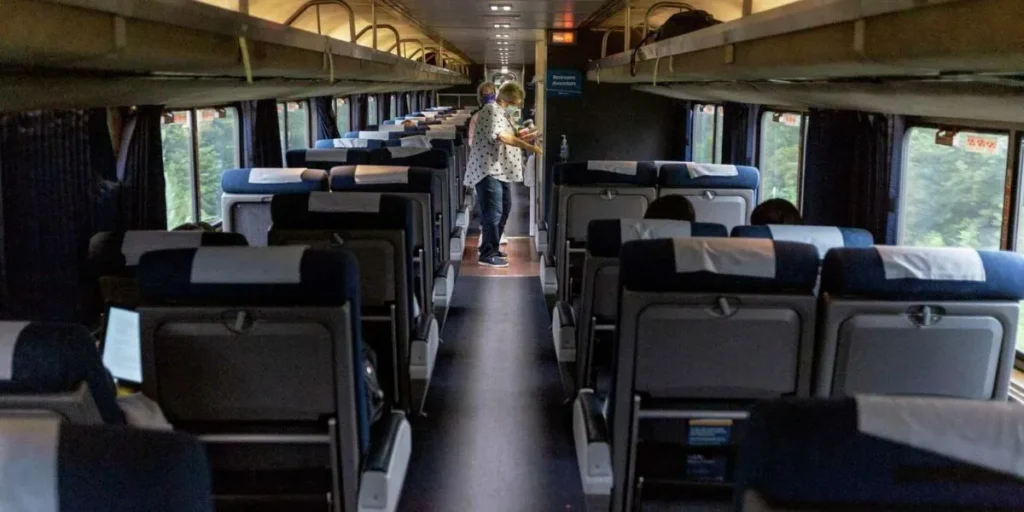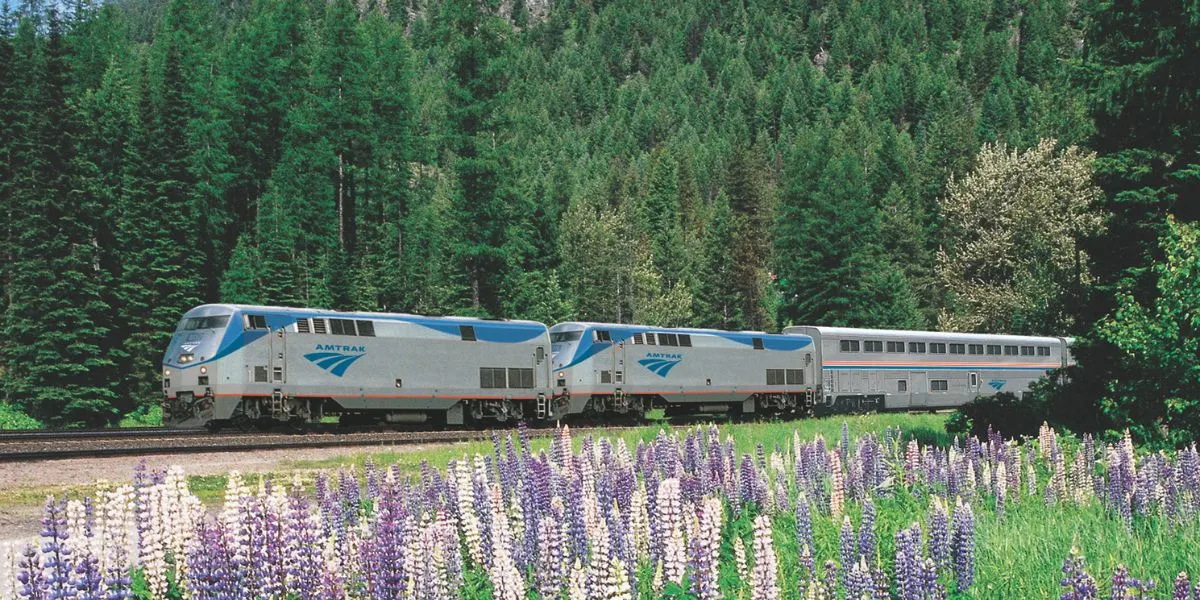
Amtrak Austin to San Antonio – Complete Train Travel Guide
Amtrak’s Texas Eagle route connects the lively city of Austin with historic San Antonio by rail. This route offers a restful and scenic alternative to the often congested I-35 highway corridor. With one train per day and fares starting from just around $11, it offers a low-stress, enjoyable option for travelers. This guide will walk you through all you need to know, including stations, schedules, prices, onboard services, trip planning, and even future rail developments.
| Feature | Details |
|---|---|
| Operator | Amtrak — Texas Eagle |
| Frequency | 1 train per day in each direction |
| Travel Time | 3 hours 26 minutes |
| Distance | 80 miles / 118–119 km |
| Coach Fare | $10–$18 (often $11–$13) |
| Private Rooms | $82–$216 (includes amenities) |
| Stations | Austin (250 N Lamar Blvd) to San Antonio (350 Hoefgen St) |
Texas Eagle Train Trip: Schedule, Time, and Distance
The Texas Eagle train runs once every day between Austin and San Antonio. If you’re traveling from San Antonio to Austin, the train leaves early at 6:48 a.m. and arrives in Austin around 9:15 a.m. For the return trip, the train departs Austin at about 8:10 p.m. and reaches San Antonio around 11:36 p.m.
No matter which direction you’re going, the trip usually takes around 3 hours and 26 minutes. It’s a comfortable way to travel between the two cities without having to drive. The distance between Austin and San Antonio is about 80 miles. In kilometers, that’s roughly 118 to 119 km, depending on the source. The Texas Eagle is a good option for a relaxing and scenic ride between these two Texas cities.
How Much Does the Texas Eagle Train Fare Cost?
Coach tickets for the Texas Eagle between Austin and San Antonio usually cost between $10 and $18. Most people find prices around $11 to $13, especially if they book early. Some websites may show fares as low as $10.
If you’re traveling a longer distance, like from Chicago to San Antonio, you can book a private room such as a Roomette or Bedroom. These range from $82 to $216 and include extra features like a private restroom, shower, and meals. Coach is the most affordable choice for short trips between Austin and San Antonio.
Services Provided on the Amtrak Train Between Austin and San Antonio

Traveling by Amtrak between Austin and San Antonio is a calm and comfortable way to avoid highway traffic. Below are the main services offered along this route.
- Austin Station: The Austin station is a historic brick building that dates back to 1947. It has a waiting room where passengers can sit before boarding, a staffed ticket office for buying or collecting tickets, and a checked baggage service for those carrying larger luggage. Passengers can also find parking spaces near the station and vending machines to grab quick snacks and drinks.
- San Antonio Station: San Antonio’s station is a modern facility built in 1998, located right next to the old Sunset Station from 1902. It is the second busiest Amtrak station in Texas and serves both the daily Texas Eagle and the tri-weekly Sunset Limited routes. Passengers have access to convenient parking and bike storage facilities, making it easy to arrive by car or bicycle.
- Onboard Coach Class Amenities: Onboard the train, coach class passengers can enjoy wide, cushioned seats with plenty of legroom, making the journey comfortable even at slower speeds. Each seat has access to a power outlet for charging devices, and there is overhead storage for carry-on bags. Large windows along the train allow passengers to enjoy views of the Texas landscape as they travel.
- Food and Refreshments: A cafe car is available on the train, offering a selection of snacks, drinks, and light meals for purchase. While there is no Wi-Fi on board, passengers can bring books, movies, or games to enjoy during the ride.
- Sightseer Lounge on Longer Routes: For those continuing on longer trips, such as to Chicago, the train includes a Sightseer Lounge. This special car has wrap-around windows and an upper-level seating area designed for scenic viewing and relaxing.
- Ride Experience: Although the train takes longer than driving—about 3 hours and 26 minutes, it offers a stress-free alternative to busy highways. Some areas, especially south of San Marcos and near San Antonio, may experience slower speeds, but the overall ride remains peaceful and enjoyable.
Travel Tips for Riding Amtrak from Austin to San Antonio
- Book Early for Better Prices: Train tickets are usually cheaper when booked early. Coach class fares often range between $11 and $13, but if you wait until the last minute, prices can go up.
- Plan Your Travel Time Wisely: The evening train from Austin arrives in San Antonio quite late, which may not work for everyone. The morning train is a better choice for returning, but you might need to stay overnight in San Antonio if you’re planning a round trip.
- Know the Parking Situation: Austin station has parking available for travelers. However, San Antonio station does not offer parking, so you may need to use a rideshare service, taxi, or public transportation to reach the station.
- Bring Your Own Entertainment: Since the train doesn’t have Wi-Fi, it’s a good idea to bring a book, download movies, or bring something else to keep you entertained during the ride. There is a café car for snacks and drinks, but not much else to do on board.
- If Traveling Further, Know Your Car: If you’re continuing your journey beyond San Antonio (like to Los Angeles), make sure you’re seated in the correct “through car.” This will help you avoid moving between cars during the night.
- Be Ready for Delays: The train can be slow in some areas, especially south of San Marcos and near San Antonio. Delays can happen, so give yourself some extra time in your plans.
There is no high-speed rail between Austin and San Antonio yet, but future projects like the Lone Star Rail and expanded Amtrak service are being discussed. Progress depends on Texas matching federal funding. Rail improvements are seen as key to reducing traffic on I-35 and investing in long-term transportation. For now, Amtrak’s Texas Eagle offers a scenic, affordable alternative, with fares starting around $11–$13 and one train per day. Though slower than driving, it provides a comfortable, stress-free journey. Whether for commuting or leisure, it’s a smart option, and a small step toward a better rail future in Texas.

